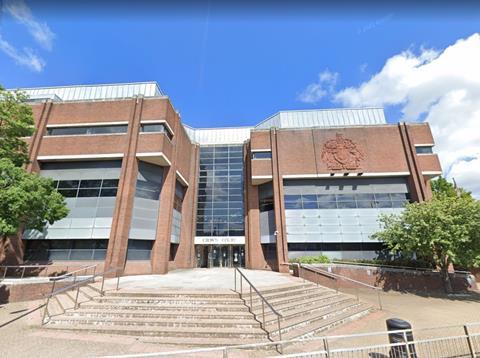Harrow Crown Court closed for repairs last month despite assurance that sites had been deemed safe

The government has ordered an urgent expansion of investigations of court buildings after lightweight failing concrete was found at a site in North London.
The Ministry of Justice (MoJ) had previously found reinforced autoclaved aerated concrete (RAAC) in six court buildings during surveys in 2020-2021 and had fixed the issues.
But the surveys only covered buildings dating from the 1960s, 1970s and 1980s as this was when the use of RAAC was most widespread.
The material was found last month in Harrow Crown Court, which was built in 1991, and the building was closed indefinitely.
RAAC was found in the building during improvement works to the roof in August. The MoJ said that while there is no indication of any imminent risk, it had decided to close the site so that repairs can take place.
Following the finding, the department has extended the scope of the previous investigations, which had finished last year, to cover the 1990s - according to the BBC.
“Out of over 350 buildings in the [His Majesty’s Courts and Tribunals] estate, including Harrow, only seven sites have been identified that currently contain RAAC,” the department said in guidance.
“All courts checked were deemed as safe following extensive surveys and tests in line with statutory building regulations.”
The guidance added: “We are fully compliant with all statutory safety checks and measures.
“A wide range of mandatory inspections, tests and surveys are completed in line with statutory laws, legislation, Approved Codes of Practice (ACOPs) and industry best practices for all assets and building fabric in HMCTS.
“This is not limited to RAAC but all aspects of our sites, buildings and grounds.”
RAAC has already been removed from one affected court building, but the other six buildings have been “robustly assessed and deemed safe”, the MoJ said.
The expansion of the surveys comes after the government told more than 100 schools to close spaces found to contain RAAC until mitigations are in place.
The measure followed what the Department of Education described as “new evidence” concerning RAAC, which it later clarified was the collapse of a beam in late August.
Schools minister Nick Gibb said last week that RAAC which had been considered by surveyors to be low risk had been re-evaluated.
“What we discovered over the summer was a number of instances, in schools and in non-schools, in England and outside England, where RAAC that had been considered to be a low risk actually turned out to be unsafe,” Gibb said.
The MoJ has also been carrying out surveys of the prison estate since April, and this work is expected to complete by the end of this year.
















No comments yet